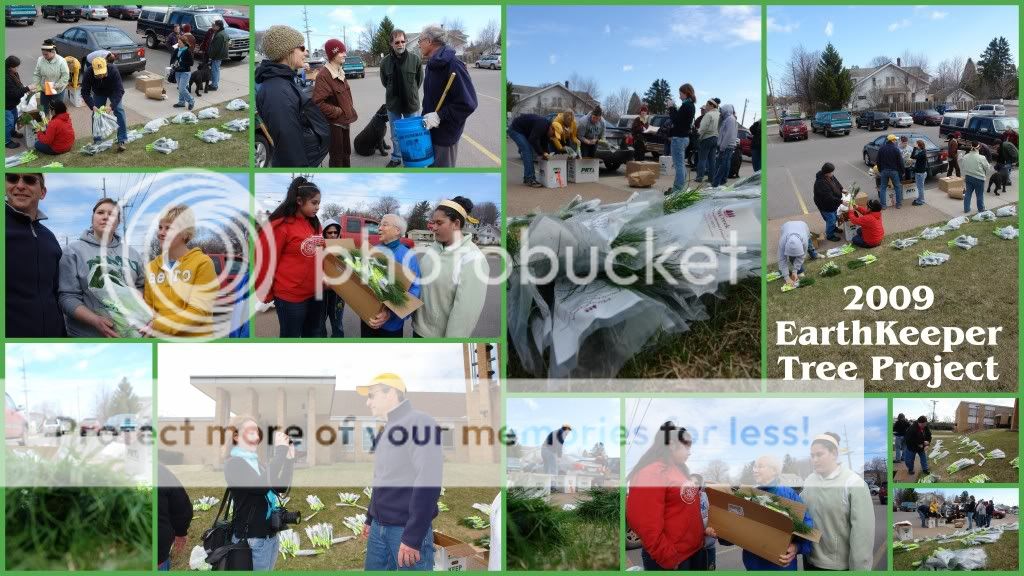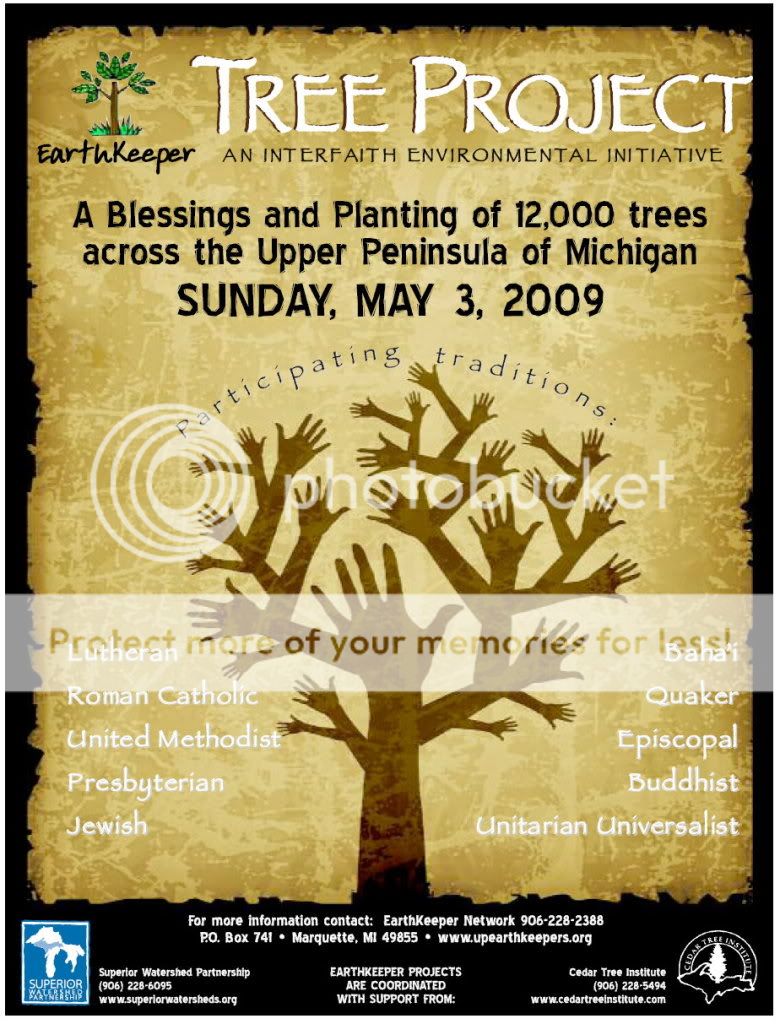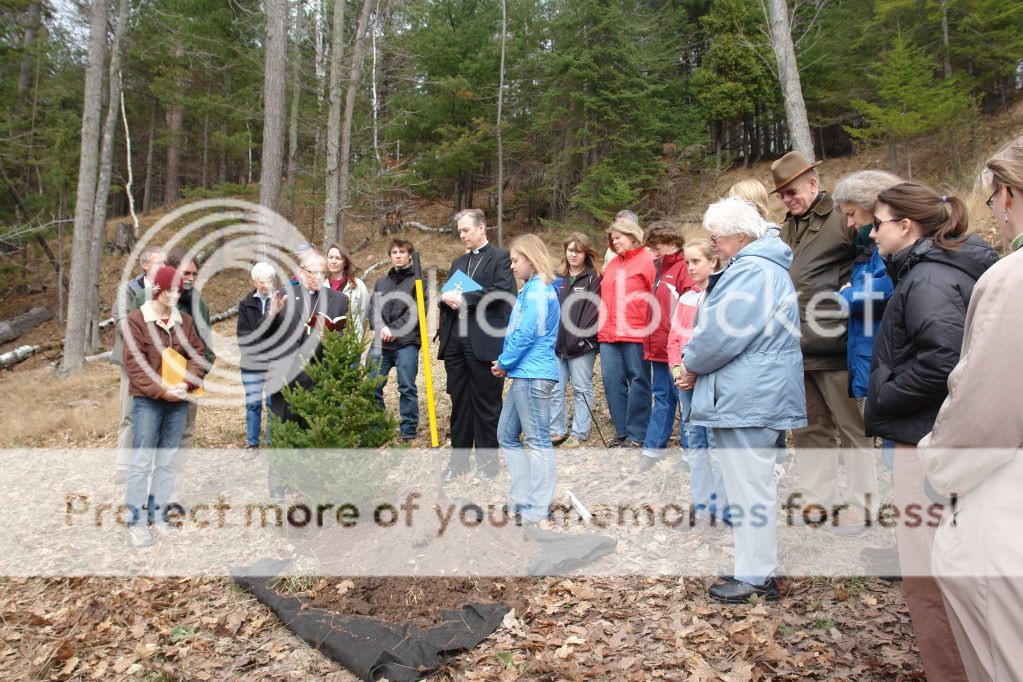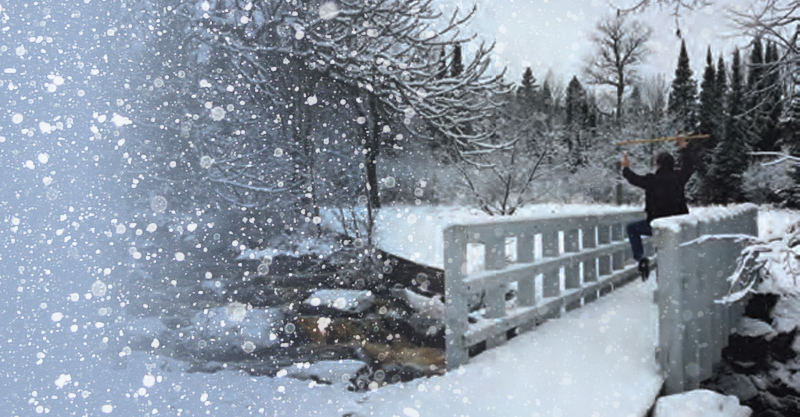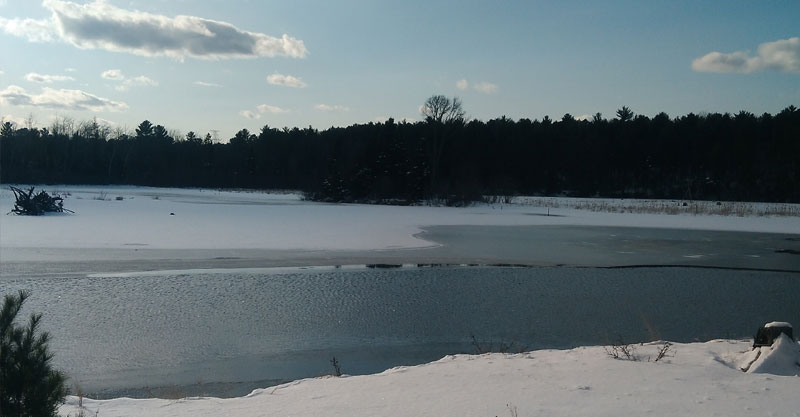Over 12,000 trees planted by Northern Michigan interfaith EarthKeepers during early May across 400 miles of northern Michigan and Minocqua, Wisconsin
Raging forest fires underline importance of planting trees
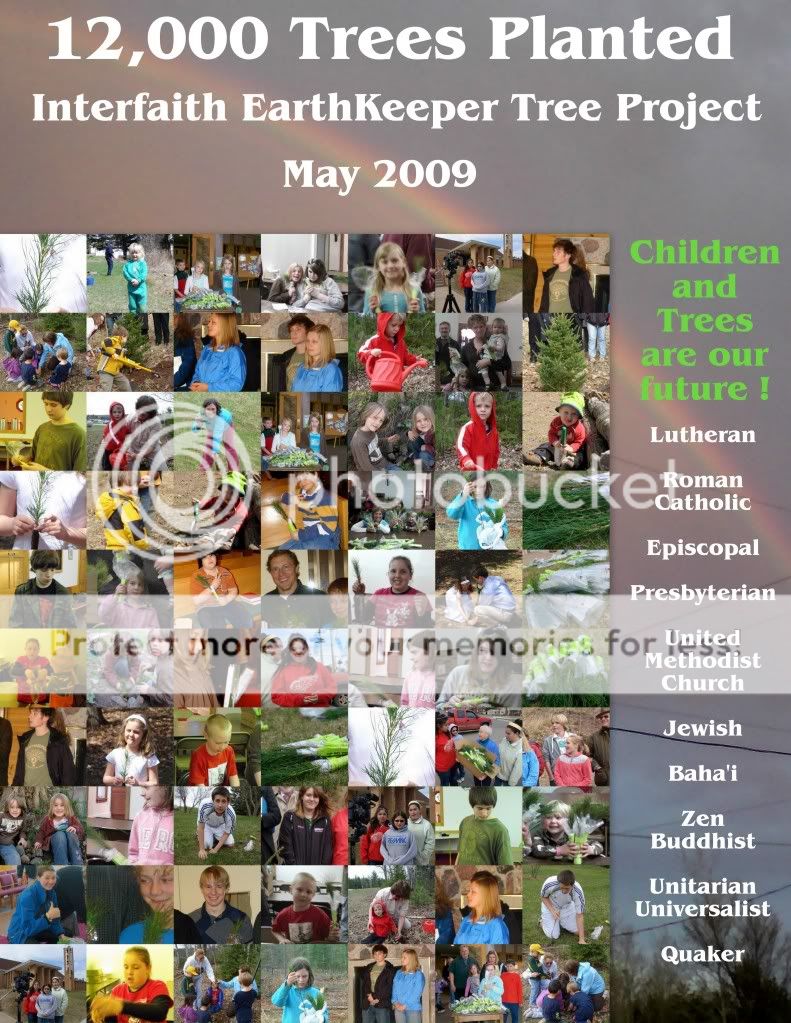
Earth Day 2009: First tree planted and blessed by northern Michigan bishops and faith leaders on Earth Day 2009 near shores of Lake Superior at Presque Isle in Marquette

(Marquette, Michigan) – Northern Michigan residents planted more than 12,000 trees in early May across a 400-mile area of the Upper Peninsula and in northern Wisconsin during the 2009 interfaith EarthKeeper Tree Project.
White Spruce and Red Pine seedlings measuring 12 to 16 inches tall were given to over 100 churches and temples in all 15 Upper Peninsula (U.P.) counties and Minocqua, WI, said Catholic EarthKeeper Kyra Fillmore of Marquette, the project distribution coordinator.
“We hope these trees grow strong and tall,” Fillmore said.
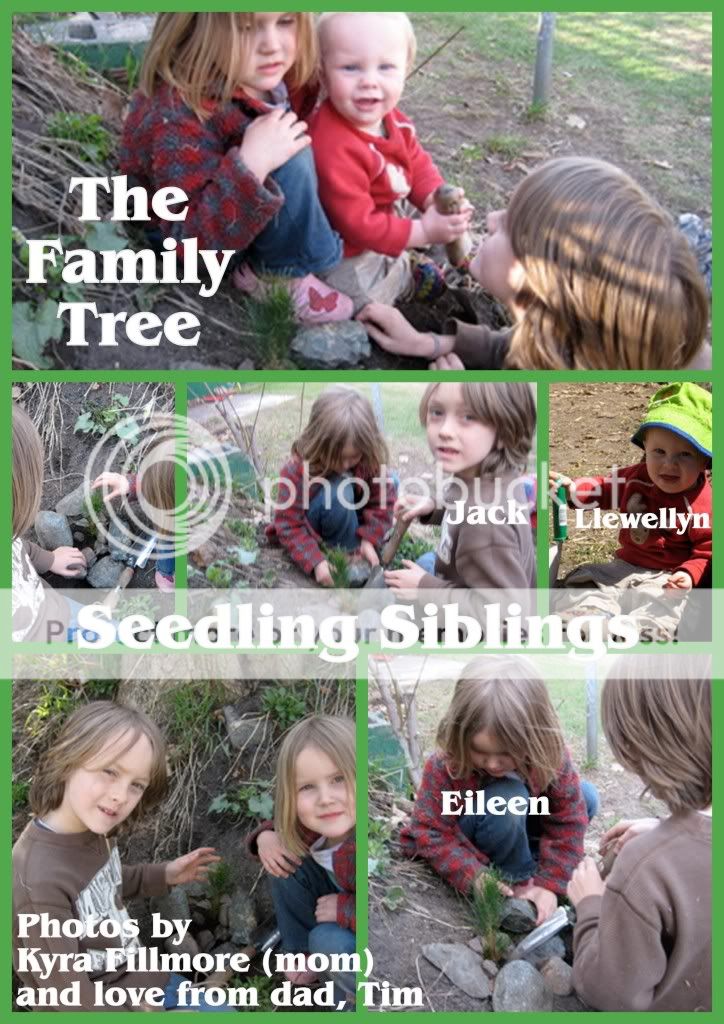
EarthKeeper volunteers planted the 12,000 trees by homes, camps, parks, American Indian reservations and many other places with help from hundreds of chilren ranging in age from two-years-old to twenty-two.
In a tragic irony, within hours of the last trees being planted two raging forest fires erupted in Marquette and Alger counties. In Marquette County, 33 structures were destroyed including 12 homes.
In Baraga County, an EarthKeeper tree planter was preparing to bury a cousin at the Pinery Cemetery when the wildfire ripped through the Native American cemetery destroying 45 spirit houses. Fortunately there were no deaths or serious injuries reported. Untold thousands and thousands of trees were burned in the forest fires.
The fires underline the need for people to plant trees and remove dead underbrush from around your home.
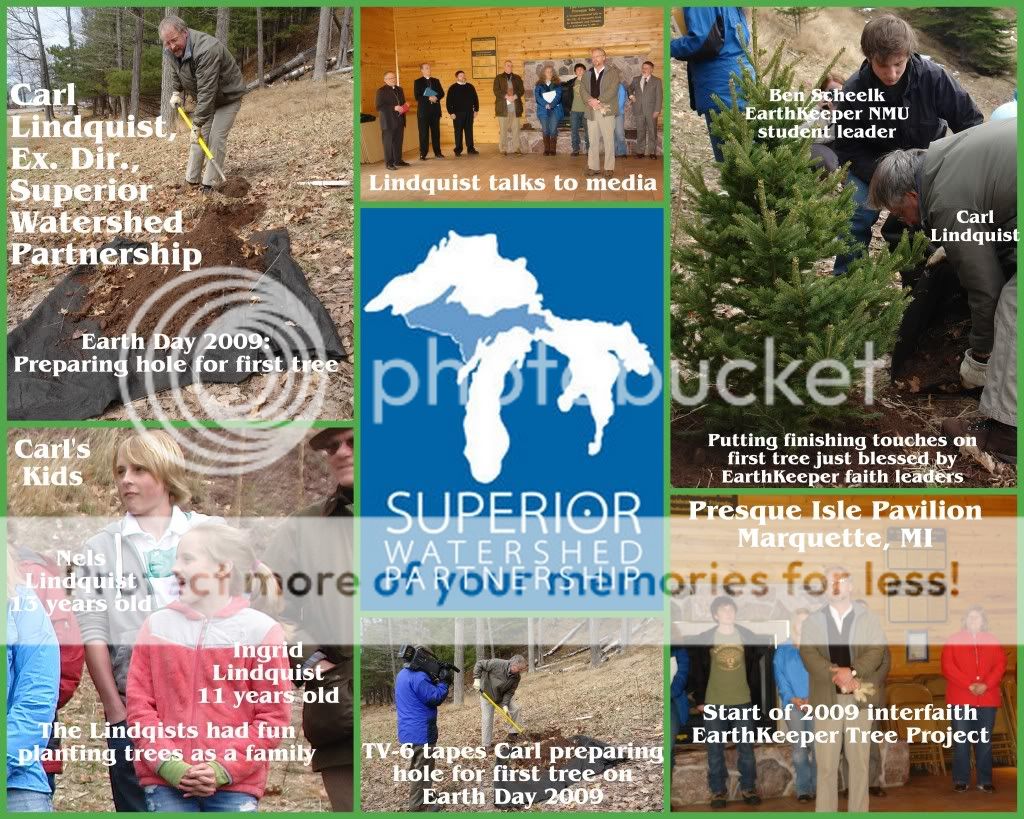
“My kids and I had a great time packing trees and planting trees,” said Carl Lindquist, who has a son Nels, 13, and a daughter Ingrid, 11, and is executive director of the nonprofit Superior Watershed Partnership in Marquette. “I think everyone likes to feel like they are part of something much bigger than they are.”
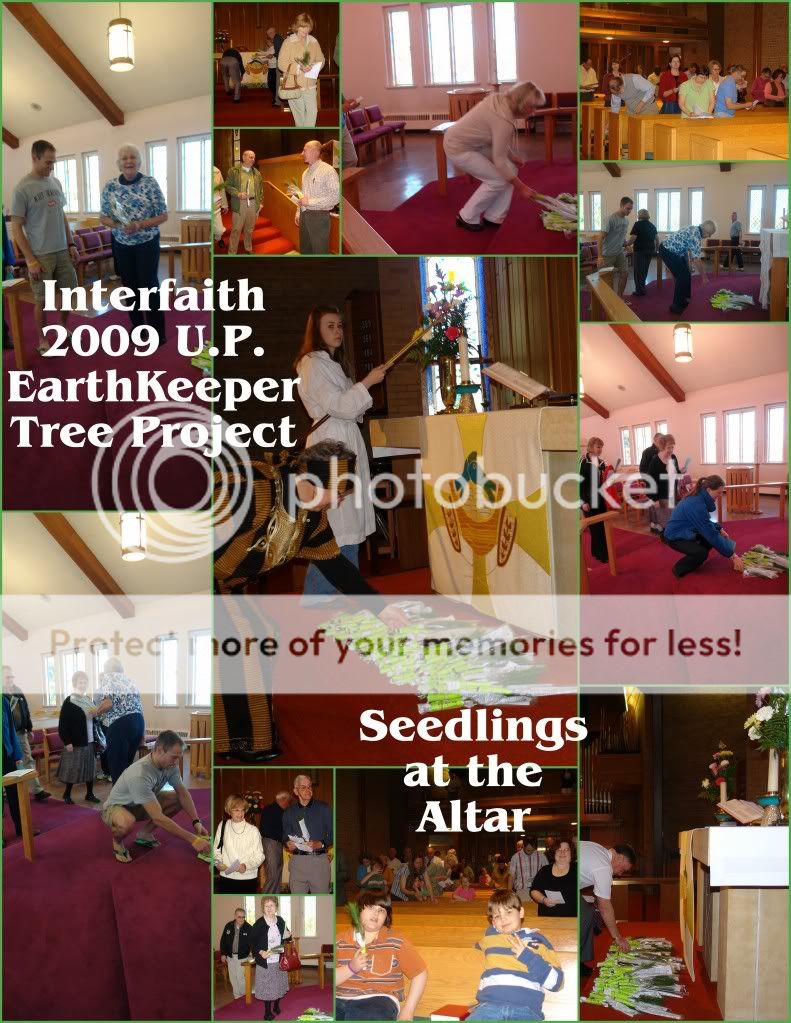
The EarthKeeper team includes ten faith traditions with over 150 participating churches/temples (Catholic, Episcopal, Lutheran, Presbyterian, United Methodist Church, Unitarian Universalist, Baha’i, Jewish, Zen Buddist, Quakers), plus the nonprofit Superior Watershed Partnership, the nonprofit Cedar Tree Institute, and the Northern Michigan University EarthKeeper (NMU EK) Student Team.
Three Native American sisters and their mom volunteered at the Marquette tree distribution center. The girls planted trees behind their Gwinn, MI home hoping to attract more wildlife to what has turned into a nature preserve of sorts with a wide variety of wild animals and birds.

“We’ve decided to do a wildlife sanctuary in our backyard because we already have deer and many other animals come,” said Pamella Vincent, 17, a senior at Gwinn High School. “It will be really cool to see different animals come because of the trees.”
In the eight-acre area, “we already have Sand Hill Cranes, and deer and coyotes there, so we are trying to get more animals to come,” said Paige Vincent, 14, an eighth grader at Gwinn Middle School.
The youngest sister, Gilbert Elementary School sixth grader Paula Vincent, 12, said she has spotted cranes and “had popcorn in my hand and a crow came to eat out of my hand.
The Vincent family are members of St. James the Less Episcopal Church in Harvey, MI.
The girl’s mom Theresa Vincent said her great-grandpa was a Cherokee chief in Maryland who was joined by other relatives in walking the “Trail of Tears” into the Appalachian foothills. Vincent said she has taught her daughters about the respect Native Americans have for the land and wildlife.
“We’re here to help keep the earth green and the trees are important,” Theresa Vincent said. The family believes it’s important to “keep in touch with Mother Earth” in ways that include “recycling, reducing (energy consumption) and reusing” manmade products.
The sisters said Americans Indians have always respected the environment.
“It’s always been tradition for natives that if you take something away from the earth, you have to give it back – or give a blessing – so normally we would give tobacco or (in this case) plant trees,” Paige Vincent said. “We’re planting trees to give back to Mother Nature.”
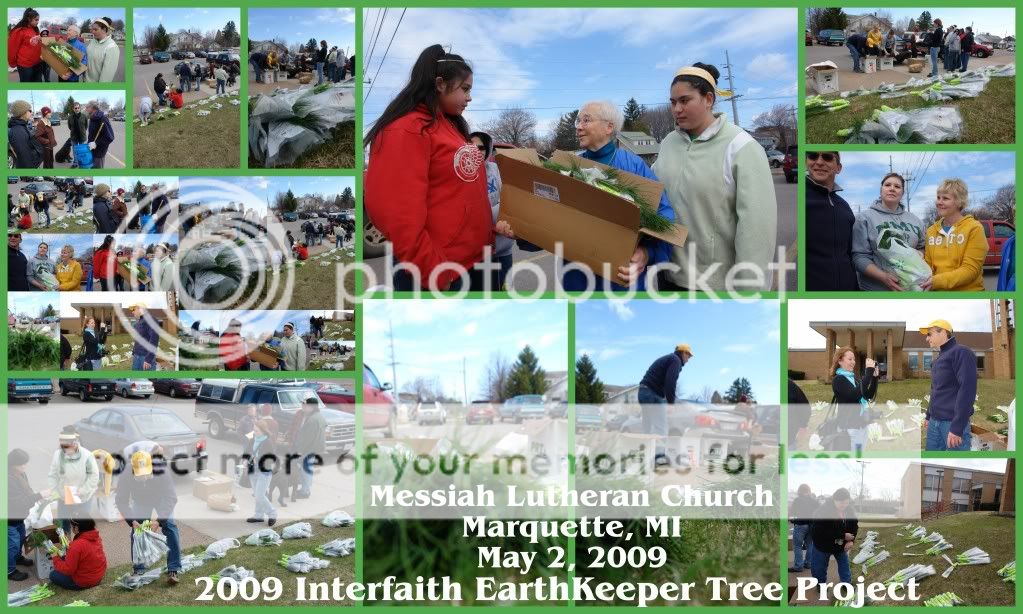
The trees were purchased or donated by the U.P. EarthKeeper team, Superior Watershed Partnership, Holli Forest Products, the Forestland Group, Plum Creek Timber Company and Meister’s Greenhouses.
Some groups and individuals have donated money to help the tree project including Thrivent Financial for Lutherans Western U.P. Chapter 30918 in Ironwood, MI.
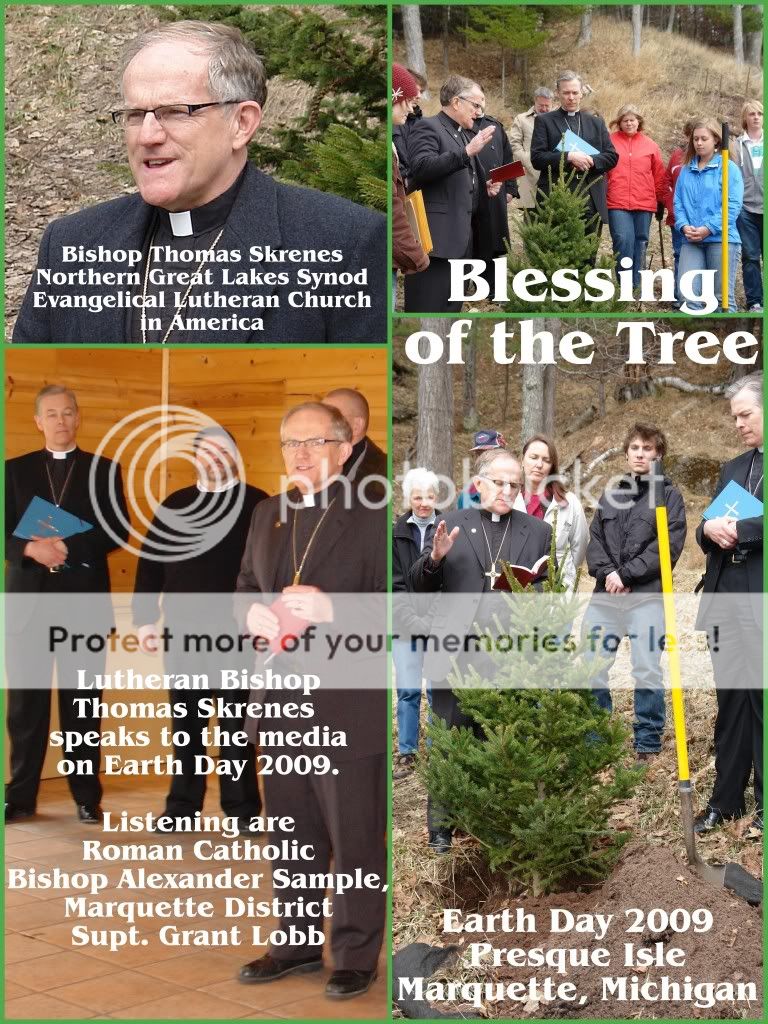
The EarthKeepers is “focused on how the faith communities can work together” despite theological differences, said Northern Great Lakes Synod Lutheran Bishop Thomas A. Skrenes.
“Religious differences are a huge factor in many parts of life and certainly there are big differences between different religious communities,” said Bishop Skrenes, the head of 94 U.P. Lutheran congregations with 40,000 members.
Skrenes asked “where is it that we can find ways to work together?”
“Nature is one of those places and EarthKeepers has provided us the opportunity to again renew our relationship with people who are very different in some ways and yet very similar,” said Skrenes, an original signer of the EarthKeeper Covenant.
Volunteer Johnny Bryant delivered 3,000 seedlings – one fourth of the entire planting effort – from a Marquette warehouse to Messiah Lutheran Church that served as the Marquette County distribution center for 25 churches and temples.
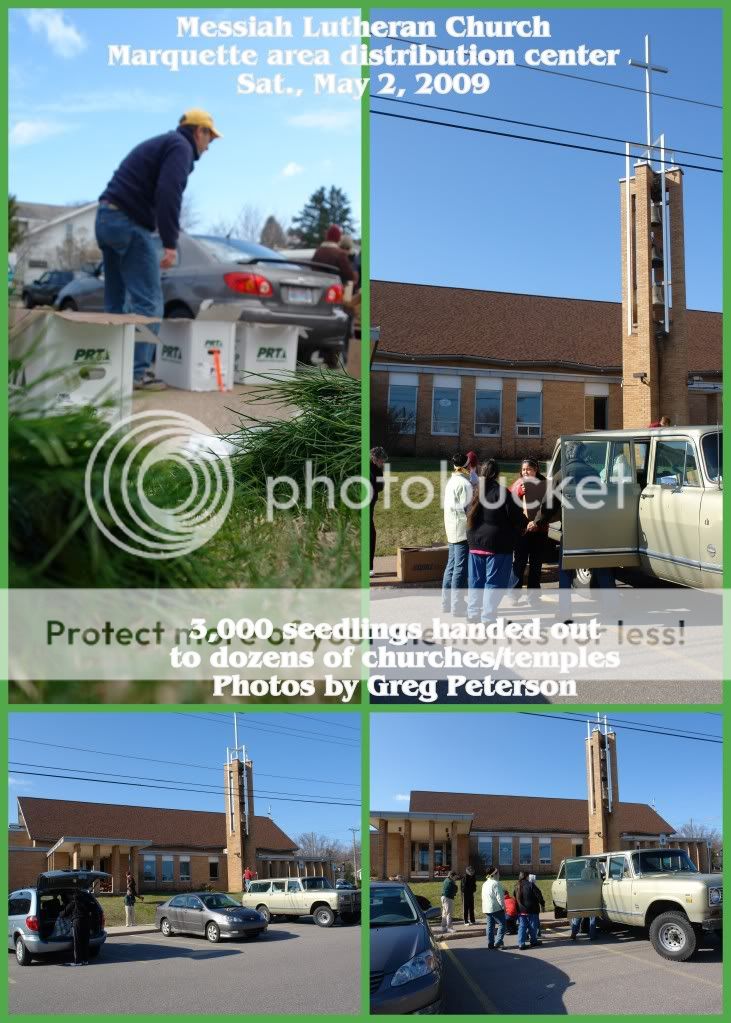
In a parking lot of the Marquette distribution center, the trees were blessed by numerous other faith traditions as the seedlings were picked up including a Catholic and Jewish blessing.
After speaking in Hebrew, Dr. Michael Grossman, a member an Ishpeming Synagogue, translated what he had said into English and explained some of the Jewish beliefs about protecting the environment.

“We have blessings for everything in Judaism, so I just blessed the trees,” said Grossman, a member of Temple Beth Sholom in Ishpeming. “We are grateful to God for bringing trees from the earth – when we eat we bless the bread – when we drink wine we bless the fruit.”
“Trees are symbolic of life,” Grossman said. “Trees are very important in Judaism as I am sure they are important to all faith traditions.”
Grossman then planted the trees at several locations in west Marquette County and in the city of Negaunee with help from two employees from his office.
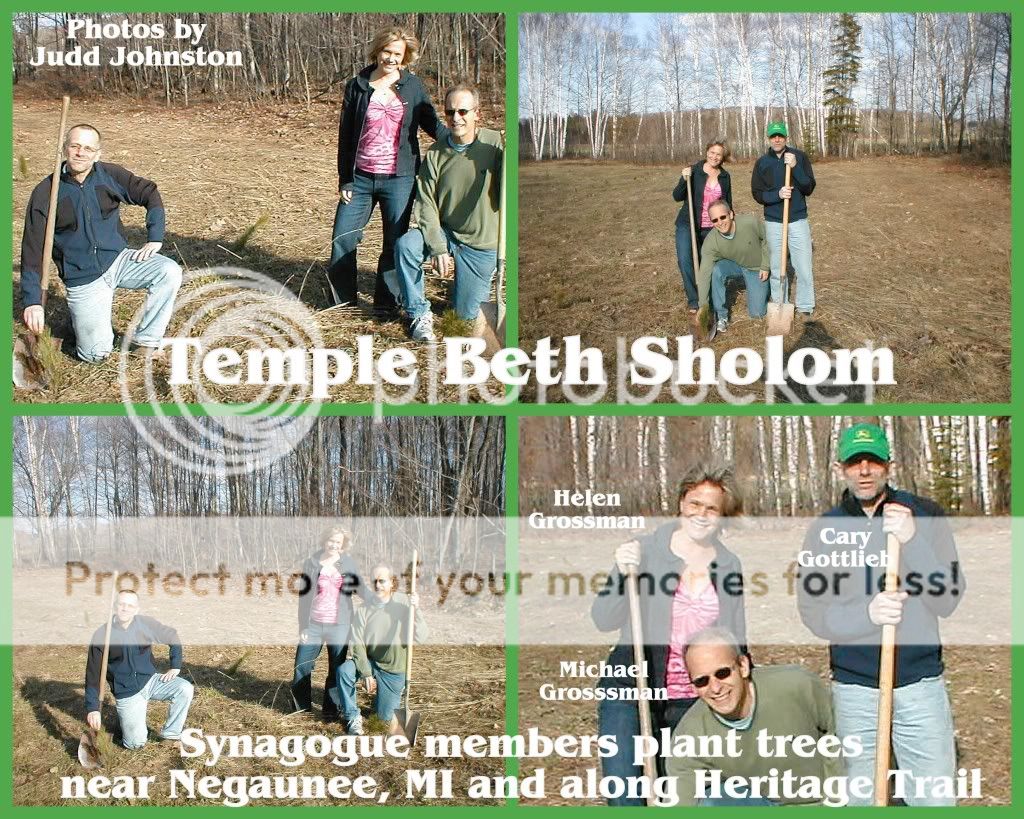
“We jumped at the chance to help plant the trees,” said Rachel Riley, 25, while standing next to fellow volunteer Kim McCarthy, 35, both of Negaunee. After the long winter, “I’ve been meaning to get out and do some work.”
Gail Griffith of Marquette, the EarthKeeper Implementation Team co-chair, brought trees to her congregation at the Marquette Unitarian Universalist Church (MUUC).
The MUUC planted seedlings in a Memorial Garden on their property near Harvey, MI and other trees as a future noise buffer to the heavy M-28 traffic that passes by their meeting house. The MUUC donated some of their trees to youth projects.
‘We had a blessing of the trees as part of our service,” Griffith said.

Powell Township students (above) in the first through fourth grades planted about 30 seedlings donated by the UU congregation.
In Big Bay, MI, the first through fourth graders at Powell Township Schools planted about 30 of the UU trees at several locations including in the schoolyard and at near-by Perkins Park.
“The students really took on a great deal of empathy for the trees – they carefully placed them in the holes, tucked the dirt around, created moats, stood up the sticks,” said teacher Kathy Wright. “Most kids visit their trees faithfully, sometimes leaving little special rocks or giving the trees and extra drink.”
The students and teachers “thank the Unitarian Universalist congregation for the opportunity to connect with our Mother Earth, and for the vehicle to teach our kids about the value of trees and earth stewardship,” Wright said.
MUUC member Nancy Irish the planting was more fun than work.
“We were digging and watering,” Irish said. “We talked about how big they would be 20 years from now, and how we might drive by and remember the day that 12,000 trees were planted all across the U.P.”
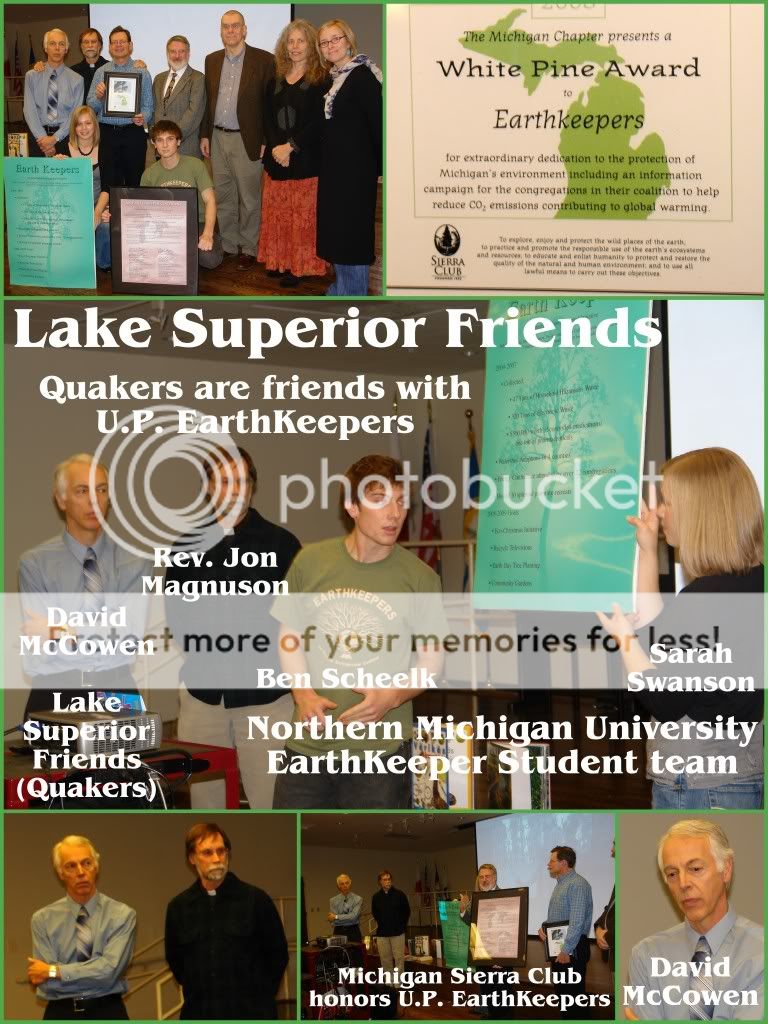
Northern Michigan Quakers planted approximately 50 trees during the EarthKeeper project.
The Lake Superior Friends is one of two U.P. Quaker groups in northern Michigan (the other is Keweenaw Friends Meeting in Houghton).
David McCowen of Lake Superior Friends said at one of their recent meetings a seven-year-old girl said planting trees is one way to respect the planet.
“I think it is important to help the earth by planting trees, because it is giving and good for the earth,” the youngster said.
In accordance with their religion, the Quakers quietly support the EarthKeepers and seldom publicly discuss their daily actions that show respect for the earth, wildlife and people, McCowen said.
One of the basic testimonials of the Quakers is “Simplicity of Living,” McCowen said. “A modern outgrowth of that testimonial is care for the environment.”
“Being planters of the trees helps us personally take part in continuing that creation,” McCowen said. “Here in the UP it is easy to take trees for granted, but trees are a major part of the surroundings that we love.”
“The technical benefits of trees are well known: carbon sequestration, sound buffers, wind breaks, wildlife habitat, fuel source, cellulose fiber source,” McCowen said. “But faith communities have the privilege and responsibility of unselfishly considering the natural environment as being inherently desirable.”
Lake Superior Friends Meeting member Jim Smit of Harvey said that “stewardship of the earth finds its roots in the biblical account of creation.”
“Adam’s job was to cultivate a garden filled with beautiful trees that produced good fruit,” Smit said.
“Six times in the creation story the writer pauses to say that God looked at what he had made, and behold, it was very good,” Smit said, adding “the implication is that we are meant to celebrate the earth and protect it.”
Smit said an example of Quaker views on the environment was explained during the Faith and Practice book written based on the North Pacific Yearly Meeting that reads in part: “We are obliged to cherish the earth, and to protect all its resources in a spirit of humble stewardship, committed to the right sharing of these resources among people everywhere.”
“Friends use questions or queries to approach issues of faith, implying that each of us is a seeker after truth,” Smit said.
The Faith and Practice book from the Friends’ (Quaker’s) 1972 Philadelphia Yearly Meeting questioned human impact on the environment: “Are you concerned that our increasing power over nature should not be used irresponsibly but with reverence for life and with a sense of the splendor of God’s continuing creation?”
McCowen said passages in the Bible books of Genesis, Isaiah and Leviticus reflect the Quaker view on nature, land and the Earth:
“God saw all that he had made, and it was very good.” – Genesis 1:31
“You will go out in joy and be led forth in peace; the mountains and hills will burst into song before you, and all the trees of the field will clap their hands.” – Isaiah 55:12
“Your land must not be sold on a permanent basis, because you do not own it; it belongs to God, and you are like foreigners who are allowed to make use of it.” – Leviticus 25:23
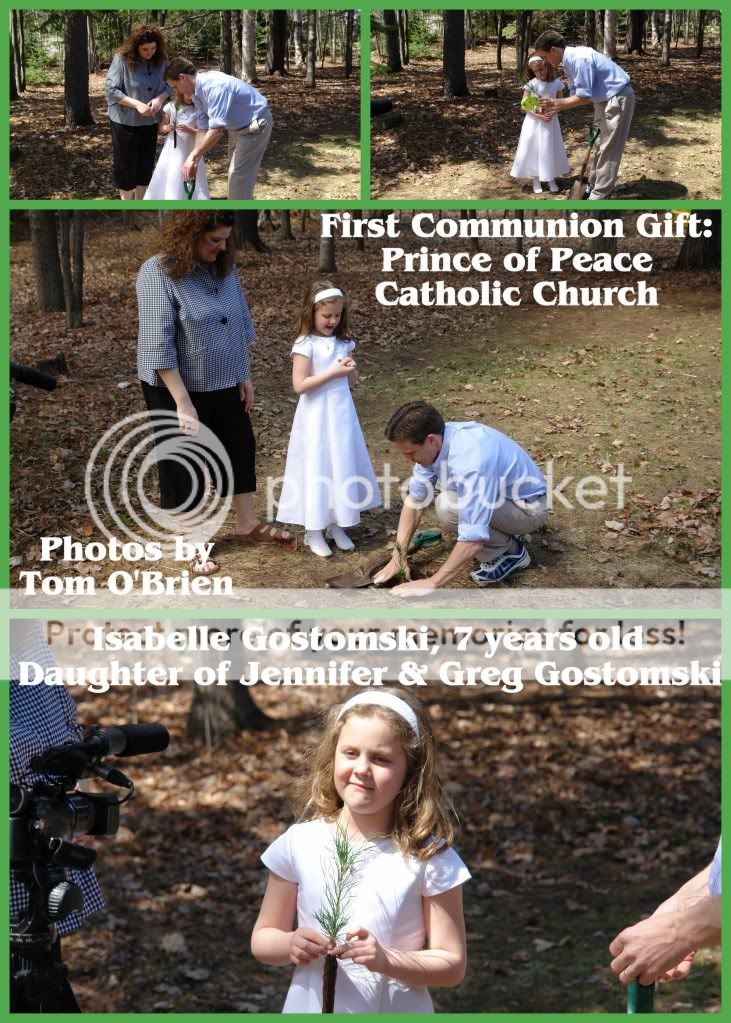
In Chocolay Township, seven-year-old Isabelle Gostomski was dressed in her finest Sunday dress as she and her father planted a seedling in their front yard.
“I got it from church and it’s a tree – today was my first communion and I got this for a present.” said Gostomski, the daughter of Jennifer and Greg Gostomski. The family attends St. Louis the King parish in Harvey, MI.
Several faith leaders gave examples how the tree is used in religion in both a literal way and in a figurative way as in the “tree of life.”
Whiling hosting a planting party on a Baha’i holy day, Steve Lockwood showed the amateur foresters “some trees that he planted that are twenty years old and they were a lot taller than me,” said Eve McCowen, 12, about her fourth participation in a hands-on EarthKeeper environment project.

12-year-old Eve McCowen of Marquette, a veteran of several EarthKeeper projects, helps plant trees. (Photo by Dennis McCowen)
“I knew they (the seedlings) might be really big trees in 20 years,” said the home-schooled sixth grader who is more active in community projects than many of her public school peers including Girl Scouts, piano, cross-country skiing, being in the outdoors and always the enthusiastic Earth Keeper volunteer. She is the daughter of Dennis and Lisa McCowen of Marquette, MI.
Eve remembers well being a nine-year-old unloading cars and stacking broken computers almost a big as she was during the 2006 EarthKeeper Electronic (e-waste) Clean Sweep that garnered over 320 tons of e-waste across the Upper Peninsula.
The next year Eve dumped countless bags of old medicines and personal products like shampoo into the proper containers during the 2007 Earth Keeper Pharmaceutical Clean Sweep that saw over one ton of pills turned in by northern Michigan residents. The e-waste was recycled and the pharmaceuticals destroyed using EPA guidelines to ensure the medicines were not flushed only to end up in America’s drinking water.
The Local Spiritual Assembly of the Baha’is of Marquette are among the congregations of over 100 churches and temples from ten faith traditions who planted 12,000 trees across 400 miles of northern Michigan during early May 2009.
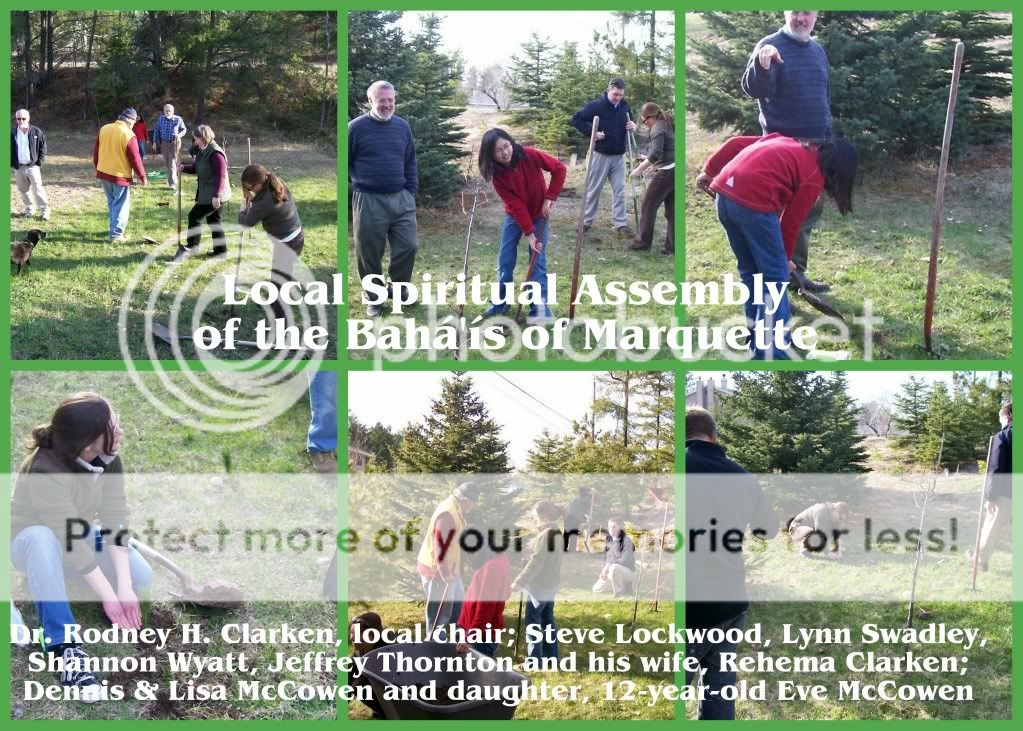
“If we cut down all the trees there wont be any more trees,” Eve McCowen said. “The animals can’t live in nests in trees if there are no trees.”
Baha’is took turns using a heavy steel rod to poke planting holes in the soil and planted the seedlings,” she said. “After we put the tree in the ground and we put dirt around it.”
Eve said she realized that logging was necessary to provide paper for schools and wood to build homes, but added “some people just have fun cutting down tree.”
If you cut down a tree you have to replace a tree,” she said. “When you breathe we get oxygen from the trees and the trees pick up your carbon dioxide and turns it into oxygen.”
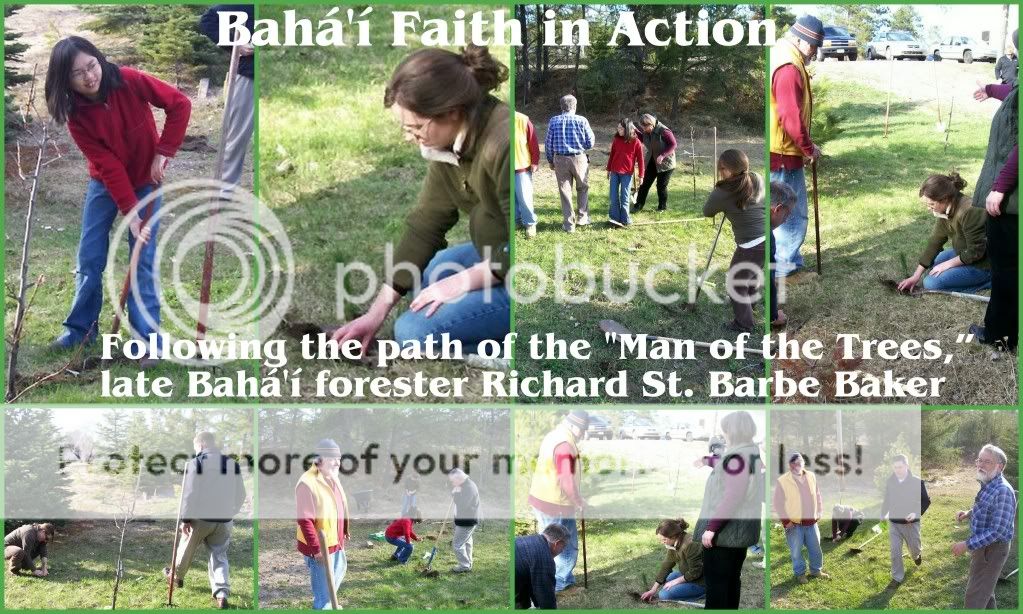
Trees and the environment are much more than a cause to Baha’is because “this world and nature is the embodiment of the name of God, the creator, the maker,” said Marquette Baha’i local chair Dr. Rodney Clarken while explaining the Baha’i faith to NMU students during the “Sacred Planet” series sponsored by the NMU Earth Keeper Student Team.
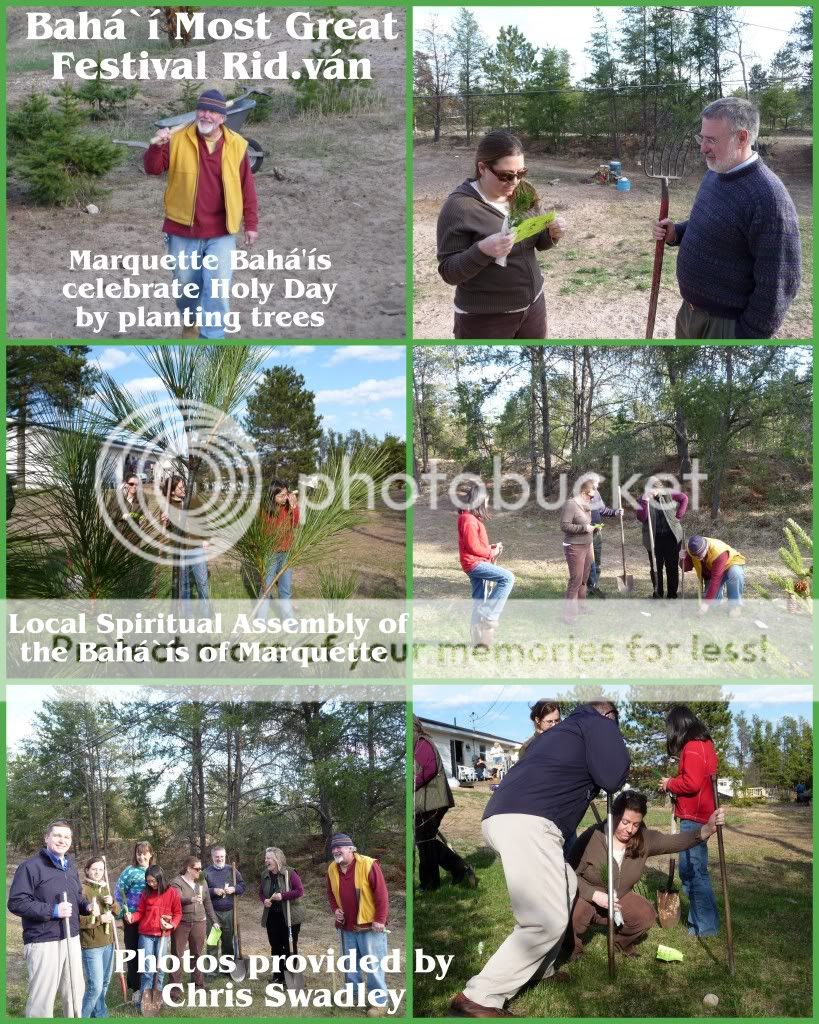
“When we look at nature, we see the name of God reflected in all of God’s creation – but in nature particularly we see that image of God in the same way we see the image of God in the human being,” Clarken told the students.
There are about 40 Baha’is in the Marquette area, 144,000 in the United States and six million around the world, said Clarken, the director of the NMU School of Education, associate dean of Teacher Education and professor.

Rev. Tesshin Paul Lehmberg, a Soto Zen Buddhist priest, told the NMU Sacred Planet forum how 2,500 years ago “the Buddha sat under a tree” called the Bodhi Tree until he discovered “the root of suffering – and how to rid one’s self of suffering.”
“The leaf of the Bodhi Tree is one of the symbols of Buddhism, said Lehmberg, head priest of Lake Superior Zendo, a Zen Buddhist temple in Marquette, MI. “It’s shaped a little bit like a poplar leaf but it’s got kind of a little tail – like a heart with a tail.”
“It’s said the descendants of this Bodhi Tree are still alive, probably because we want them to be alive. We want this connection between us and the Buddha 2,500 years ago,” said Lehmberg, who is also an English professor at Northern Michigan University.
“The natural world is very important in Buddhism, particularly in Zen,” said Lehmberg, the co-chair of the EarthKeeper Implementation Team.
Rev. Lehmberg told the forum a story about Dogen, a Japanese Monk who founded Zen Buddhism in the Thirteenth Century.
“When Dogen would dip water from a stream or a well to drink, he would always pour half of it back,” Lehmberg said. “He would pour half of it back as a sign of respect for the natural world, as a symbol that he is a part of the natural world and must treat that natural world with great care.”
Lehmberg said that “Lake Superior Zendo was honored to once again participate with other EarthKeeper congregations in this important work.”
“We must – we absolutely must – care for mother earth,” Lehmberg said.
“Human life, literally and figuratively, is inseparable from mother earth,” Lehmberg said. “We are inextricably threaded to her – in caring for her, we care for ourselves.”
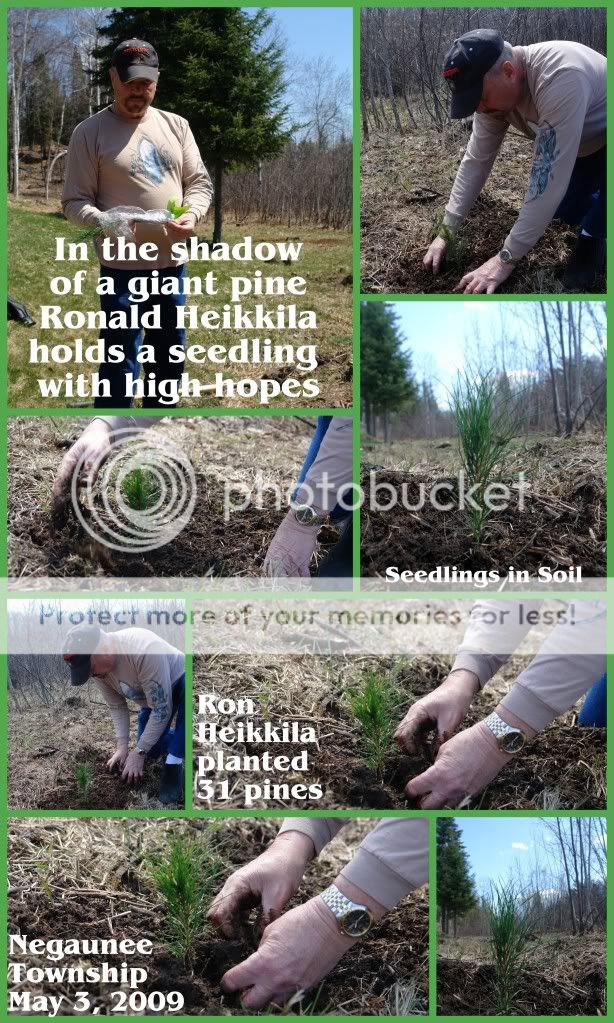
Negaunee Township resident Ronald Heikkila spent several days this week planting 31 red pine seedlings around his home.
“What you do is to try not to get roots in their,” Heikkila said while planting tree number seven.
“Look at all the nightcrawlers,” Heikkila said “I can’t believe the quality of this soil – if you wanted to go fishing here would be the place to come.”
“I am going to get some good topsoil and put it in their – and if it rains a little bit, it’s going to settle the soil,” said Heikkila, his hands covered in black dirt.
On Sunday (May 3), eight Copper Country residents including two elementary school children, planted 12 trees in the 16-acre Calumet Township Waterworks Park on the shores of Lake Superior.
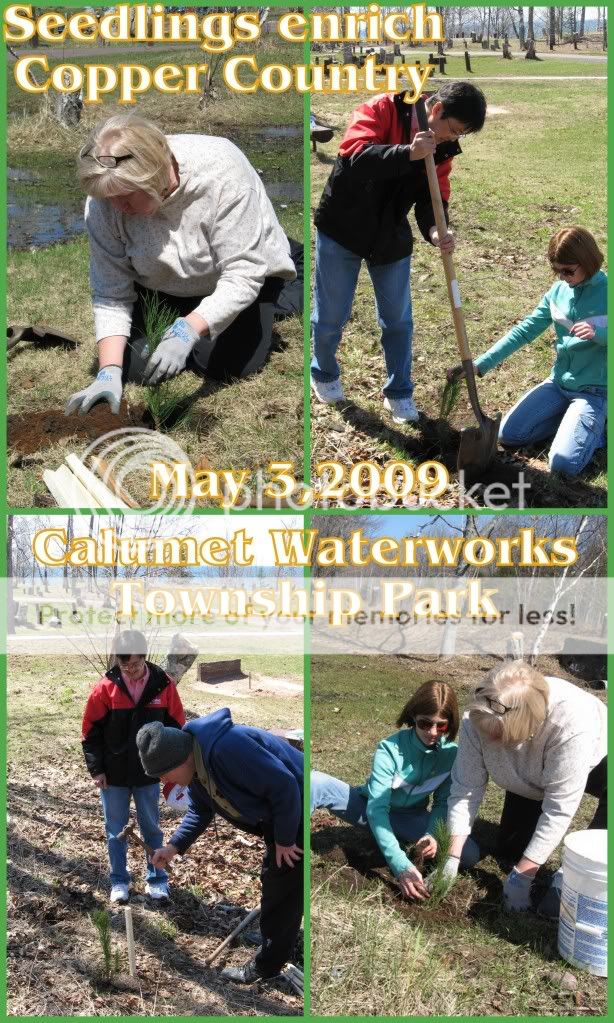
“We received permission from the Calumet township supervisor, Paul Lehto, to plant the trees,” said Susan Rokicki. “We gave three (seedlings) to township treasurer, Debra Aubin, to plant in her yard.”
“We supported the trees with sticks to keep them visible and safe,” Rokicki said. “We will return from time to time to see if our dozen need anything.”
A natural fit with the interfaith EarthKeepers, some of the planters are members of Soka Gakkai International (SGI) Buddhist Network’s Copper Range district.
The three SGI members are Susan Rokicki, Jorge Kurita and Jean Larson; plus friends Margo McCafferty-Rudd, Joseph Mihal and Maureen Tobin, and children Max Rudd and Rebecca Naumenko.

The SGI Buddhist network “actively promotes peace, culture and education through personal transformation and social responsibility, originating in Japan,” said Rokicki, who is restoring a Norwegian Lutheran Church in Calumet and is a Lutheran church pianist/organist.
“We are one of the originators of the Earth Charter and the act of planting and dedicating trees is embedded in our tradition,” Rokicki said.
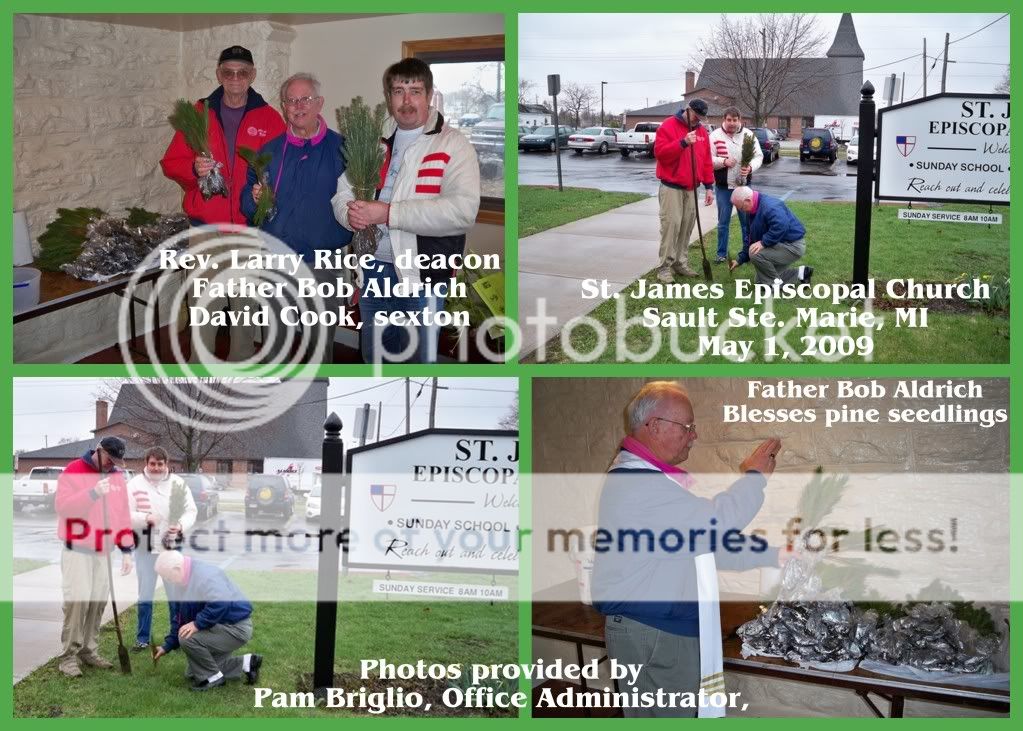
In Sault Ste. Marie, Father Bob Aldrich blessed seedlings at the St. James Episcopal Church. Some of the trees were planted in front of the church by by Father Aldrich with help from Rev. Larry Rice, deacon; and sexton David Cook, said Pam Briglio, the St. James office administrator.
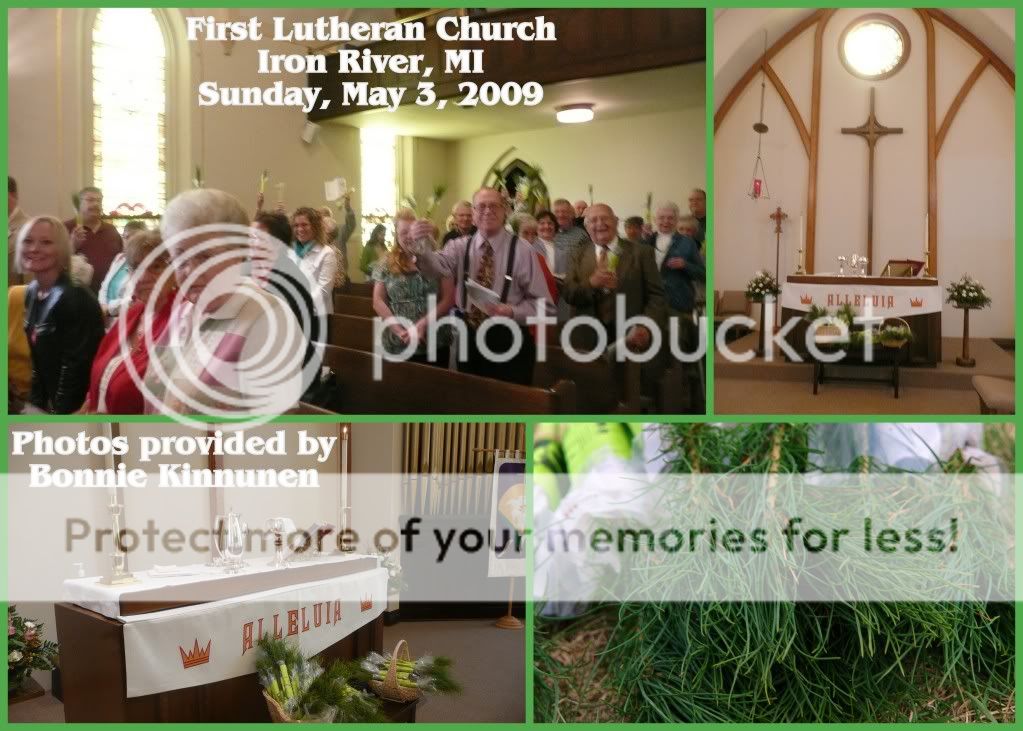
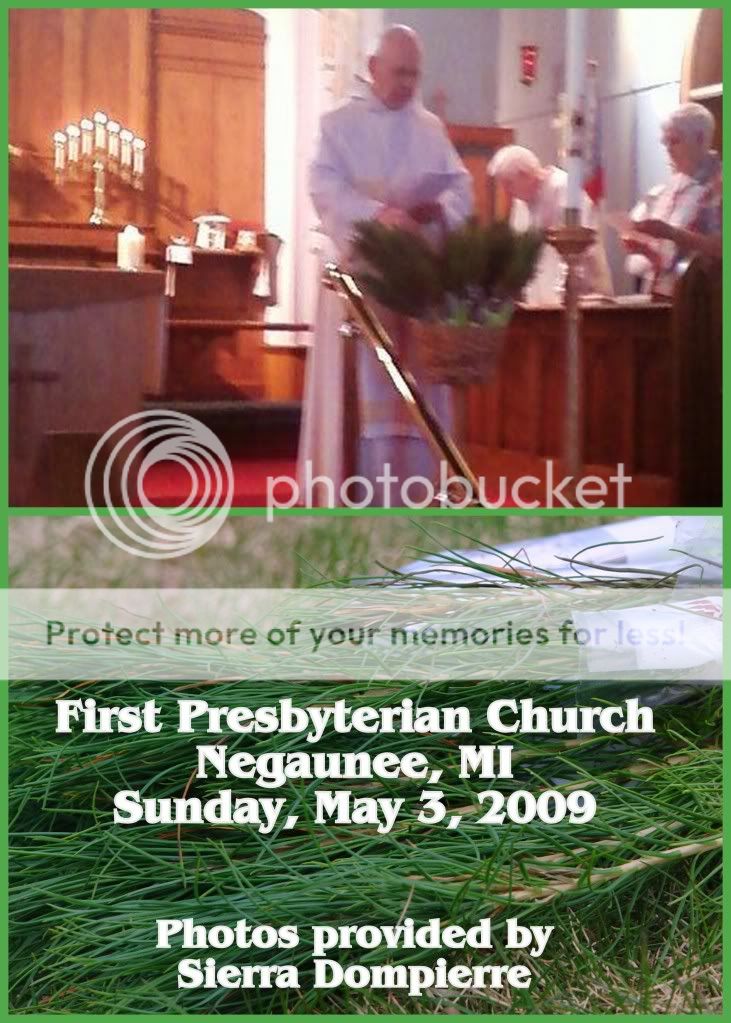
In Escanaba, MI EarthKeeper volunteers – from the First Presbyterian Church and the Central United Methodist Church – separated and bagged 1,000 trees.
In Cornell, 100 red pines were planted Wednesday night (May 6) at a camp about 12 miles from Escanaba owned by Paul and Denise DeHaan, who are members of the First Presbyterian Church in Escanaba.
“We planted approximately 100 trees on an area of clear cut land,” said Presbyterian Earth Keeper Jill Martin of Ford River Township.
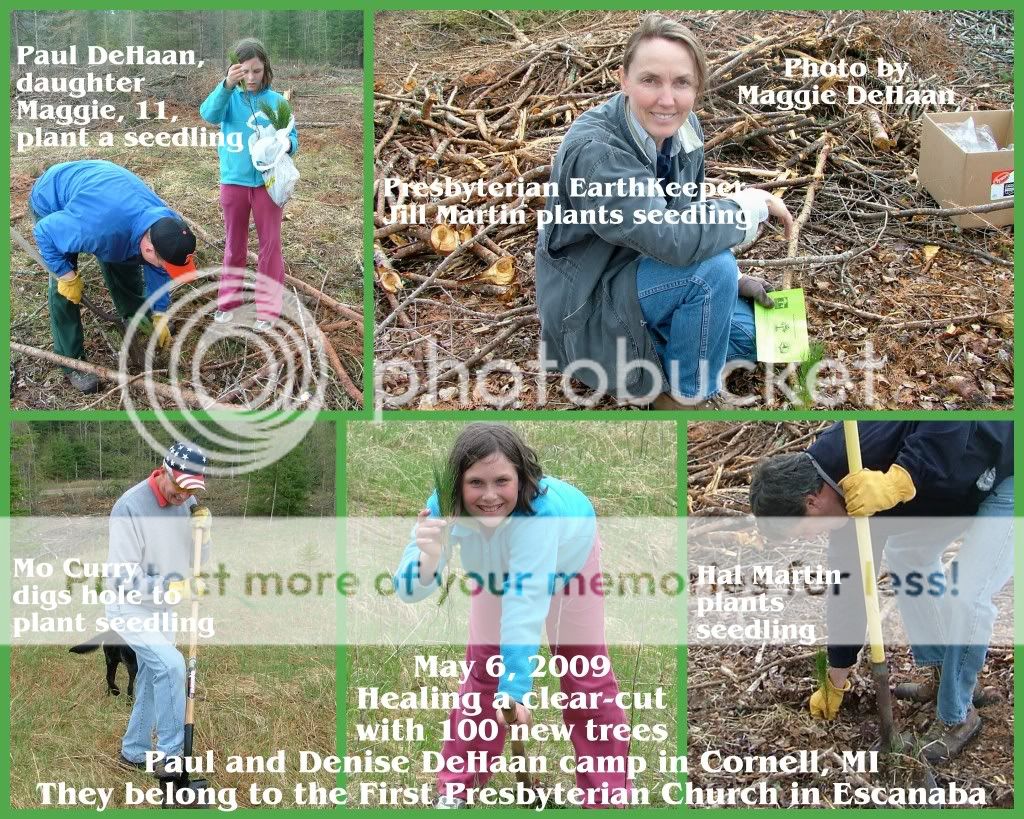
Paul DeHann said his daughter Maggie “will remember planting these trees and come out here as an adult to see them quite a bit bigger.”
DeHann gave strict instructions his daughter that the planted area would now be off limits to ORVs because the trees needed protection to grow. Jill and her husband Hal Martin then walked along the Ford River to check out the water levels.
A member of First Presbyterian Church in Escanaba, Martin said on May 3 children at her church “planted three trees into planters in the sanctuary.”
Martin said a young girl jumped over a planted seedling so that when the tree was big she could say: “I jumped over that tree.”
“The message was that seedlings are like child trees, when we plant them, we nurture them and watch them grow up to be big and we love the kids and trees like crazy,” Martin said.
“Many people told me they were going straight out to camp or the farm to plant the trees,” Martin said.
A Presbyterian member of the EarthKeeper team, Martin said the project made her feel “like the tree lady this year.”
Martin said Monday (May 4) a young man playing tennis shouted out: “Hey, I planted my trees.”
“Many people paused in thought when I suggested that a Red Pine could live 400 years,” said Martin, an environmental scientist with Wilcox Professional Services in Escanaba. “It is a wonderful feeling when you know that 400 years into the future this simple act in God’s creation could still be here as testament to our faith.”
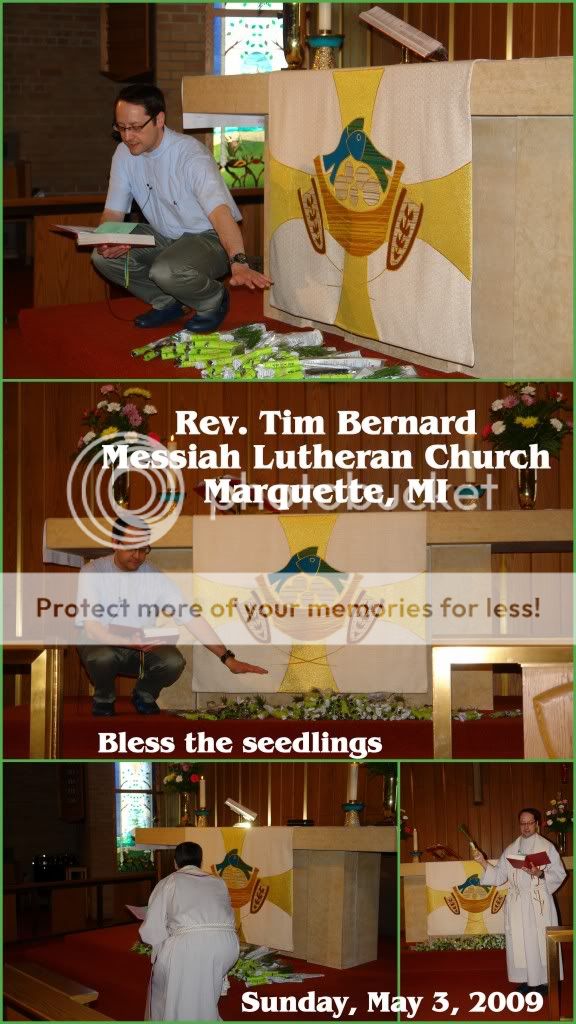
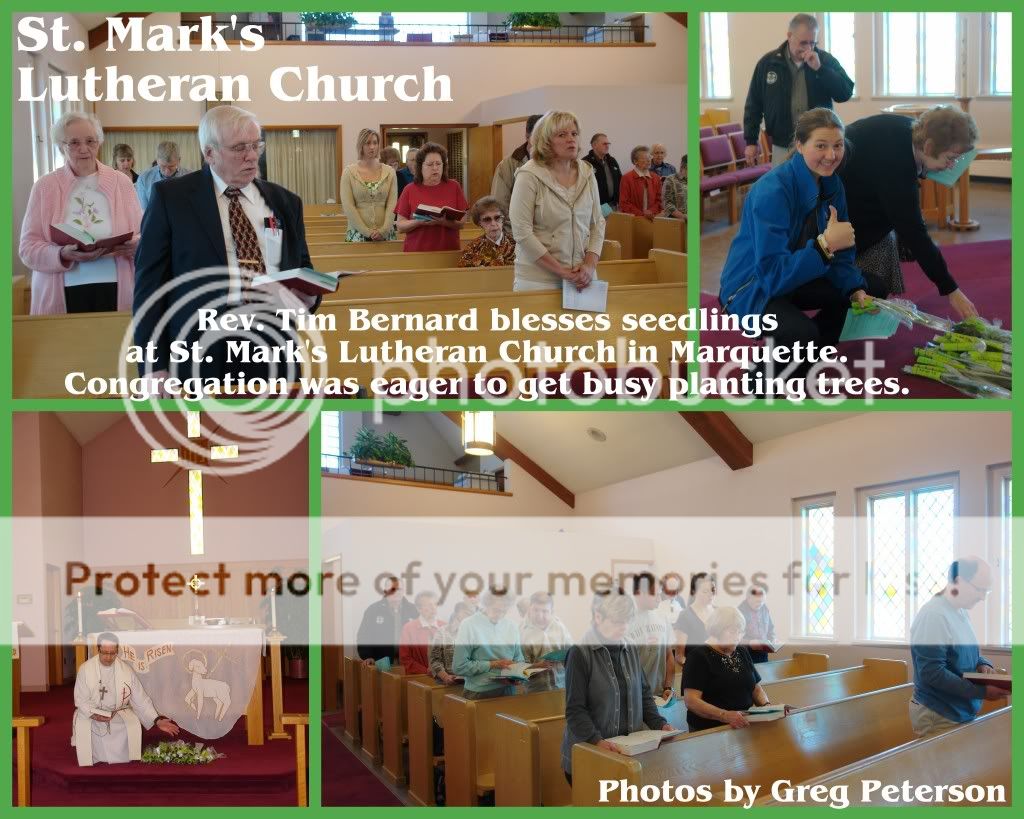
In Marquette, Lutheran Pastor Tim Bernard blessed the same group of trees three times on Sunday (May 3) during two services at Messiah Lutheran Church and one service at St. Mark’s Lutheran Church.
“These trees have been blessed three times which is a very Trinitarian number – they will grow profusely and abundantly,” Rev. Bernard joked at the final service evoking laughter from the congregation.
Dozens of second grade children ages 7 and 8 spent the week planting seedlings they were given Saturday (May 2) during a rehearsal of their first communion the next day at St. Michael Catholic Church in Marquette.

“Dear God, bless these trees in the name of all that is holy and divine – Amen,” said Rev. Monsignor John “Jed” E. Jenkins while forming the sign of the cross and sprinkling holy water on the seedlings that were then given to the children. “We sprinkle them with this holy water as a sign of the blessing.”
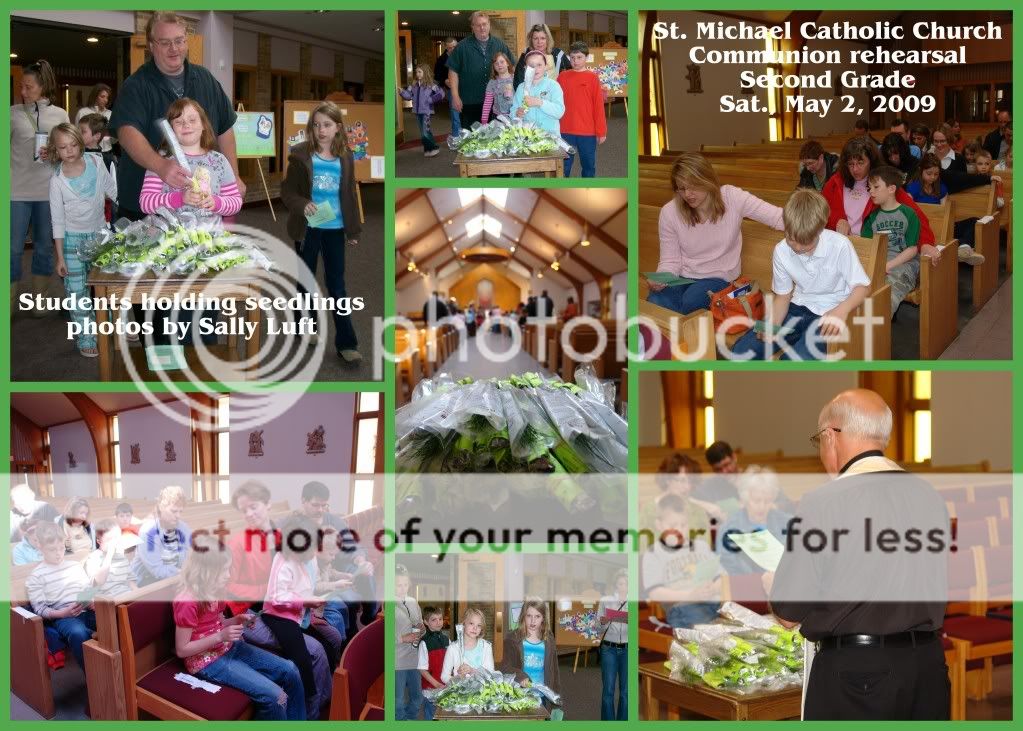
Giving trees to the St. Michael students to commemorate their first communion “is sponsored by our Christian Service Committee here at the parish,” said Sally Luft of Marquette, a committee member. “The committee sees to the needs of the concerns of our environment and of the needy among us.”
In Sagola, MI, a rainbow appeared over the Grace Presbyterian Church as about 30 EarthKeeper volunteers spent three hours bagging 1,500 seedlings.
The trees were blessed by Rev. David Anderson and then prepared to be delivered or picked up by seven other churches including Catholic, Lutheran, Presbyterian and a non-EarthKeeper but welcomed congregation – the Mission Covenant Church in Foster City.

The Presbyterian and Catholic volunteers in Sagola came in all ages and included three generations of one family. Young children were taught by adults how to properly bag the seedlings and as the night ended the kids scurried around the church picking up pine needles to help with the clean up.
Sue Piasini of Sagola said her two-year-old grandson Mason Anderson planted trees at his home in Felch and on Tuesday (May 5) outside her office at the North Dickinson Head Start Center.
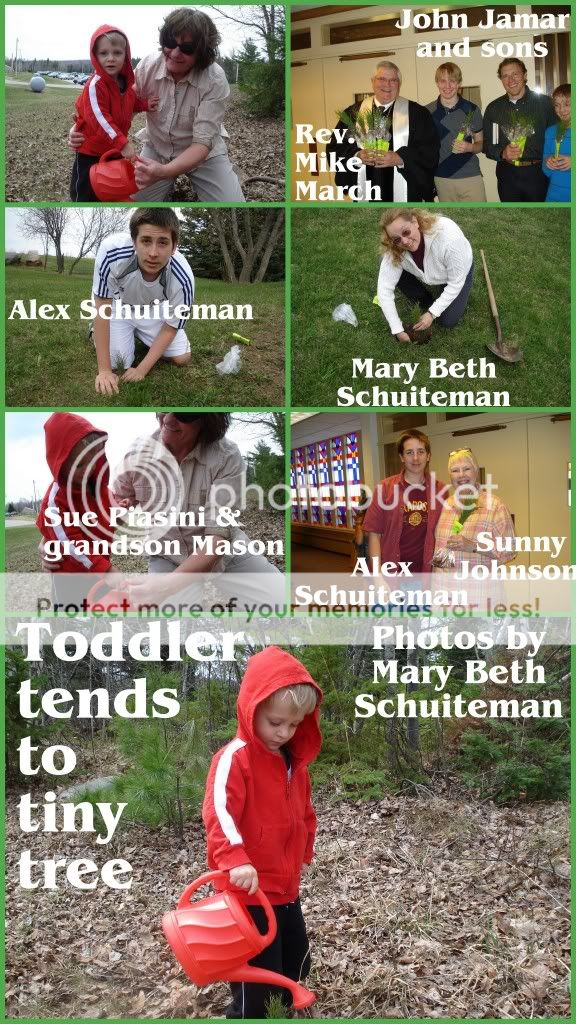
“Mason put every tree into every whole he was told – he was so cute,” Piasini said. “He watered the trees with the watering can.”
Mason is the son of Fawn and Steve Anderson of Felch.
At the North Dickinson Nordic Head Start, students planted trees with help from preschool assistant classroom coordinator Mary Beth Schuiteman of Kingsford, MI and preschool classroom coordinator Sue Piasini.

Above photos by Alex Schuiteman
Schuiteman is a member of First Presbyterian Church in Kingsford. Piasini is a member of the Grace Presbyterian Church in Sagola and was coordinator of the distribution of 1,500 trees to churches of several faiths in Dickinson County.
Schuiteman is a member of First Presbyterian Church in Kingsford. Piasini is a member of Grace United Methodist Church in Sagola and coordinated the distribution of 1,500 trees to numerous churches of various faiths in Dickinson County.
A group of volunteers planted several trees in Michigamme, MI at the United Methodist Church Camp Michigamme.

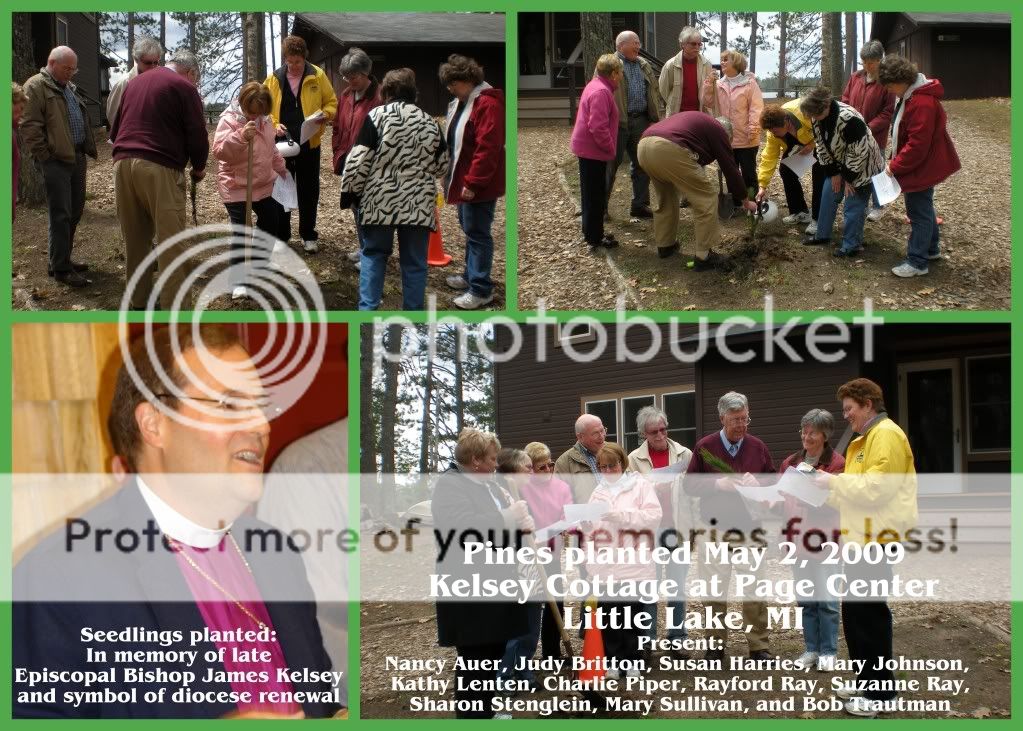
Late Episcopal Diocese of Northern Michigan Bishop James Kelsey was remembered at several events during the tree planting including at the Page Center. One of the bishop’s favorite places, the Kelsey Cottage is named in his honor at the recreation and retreat area in Little Lake, MI.
Members of the Episcopal Ministry Discernment Team representing the 27 congregations of the Episcopal Diocese of Northern Michigan gathered at the center on May 2 “for a time of reflection and fellowship.”
Two red pine trees were planted on either side of the main entry to the Kelsey cottage, one seedling was planted in memory of Bishop Kelsey, and the second as symbol of diocese renewal.
Members present included Nancy Auer, Judy Britton, Susan Harries, Mary Johnson, Kathy Lenten, Charlie Piper, Rayford Ray, Suzanne Ray, Sharon Stenglein, Mary Sullivan, and Bob Trautman.
Bishop Kelsey, one of the founders of the EarthKeepers and the first signer of the interfaith EarthKeeper Covenant, was killed in a June 2007 traffic accident that claimed two lives.
“I think he’d try to find a place for a tree in his own yard for one and he’d want to plant one at the Page Center at one at the office,” said Jane Cisluycis, Diocesan Operations Coordinator. “He’d be really pleased. Since his mantra was about inclusiveness, the fact that the circle is widening would have been really important to him.”
Kelsey would be “pleased that the EarthKeepers are getting stronger and continuing and more people are getting involved – it hasn’t stopped,” said Kathy Lenten a member of the diocese Episcopal Ministry Support Team.

The EarthKeeper Tree Project “had people of all ages and faiths working together towards another common goal; improving the Great Lakes environment that we live in,” said Lindquist, who co-founded the EarthKeeper Initiative with Rev. Jon Magnuson, the executive director of the nonprofit Cedar Tree Institute in Marquette.
“Every EarthKeeper project furthers the long term Great Lakes protection and restoration goals of the Superior Watershed Partnership,” Lindquist said.
The tree projects fits well with the goals of the Superior Watershed Partnership including its other projects like protecting water quality and preventing erosion, said Natasha Koss, Superior Watershed Partnership development director.
Trees are a “symbol of life and they represent something that is living and something we can easily put into the ground,” Koss said.
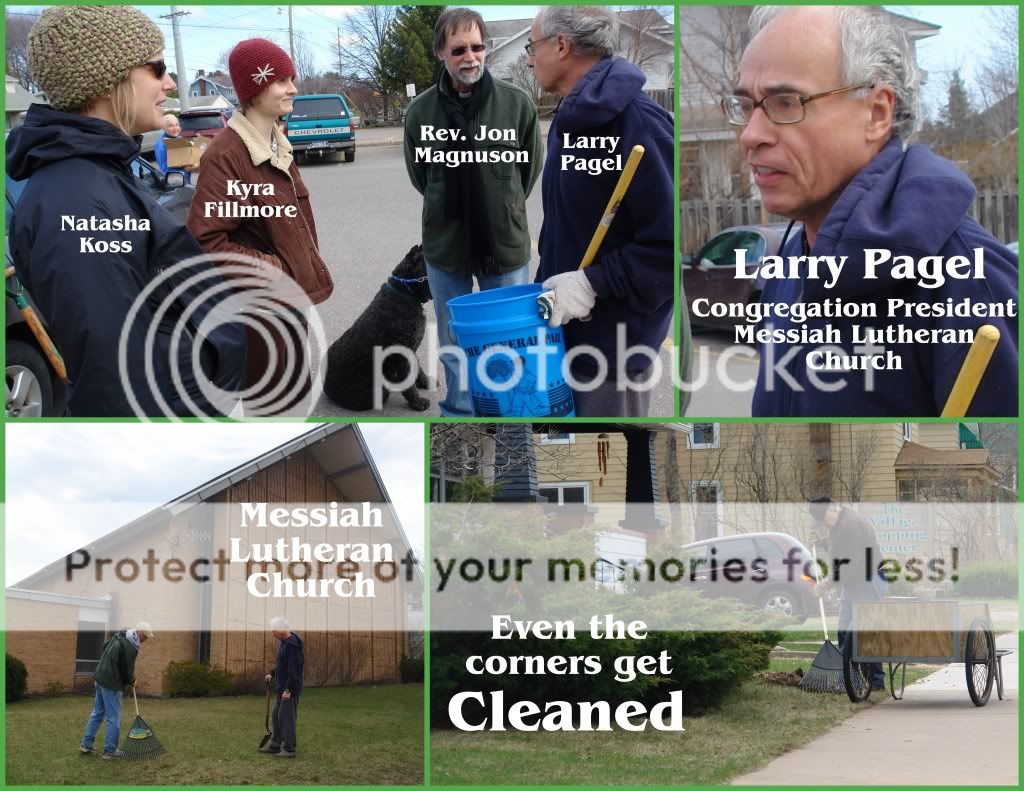
Trees are a sign “of how well the environment is doing,” said Larry Pagel, Messiah Lutheran Church congregation president. Humans “are connected to the earth through our trees.”
In addition to providing oxygen, trees have practical benefits like offering recreational opportunities including providing shade on a hot day, said Pagel, an NMU business professor.
That simple act of sitting under trees is a uniquely human desire that will be fulfilled for centuries to come because of the planting project, said Bishop Skrenes.
“Just think of the people that will sit under these trees, admire these trees, look at these trees and breathe the oxygen produced by these trees – just think of all those people for centuries ahead,” Skrenes said.
Experts say 12,000 mature trees absorb 3 million pounds of carbon dioxide annually and produce enough oxygen to support 24,000 humans.
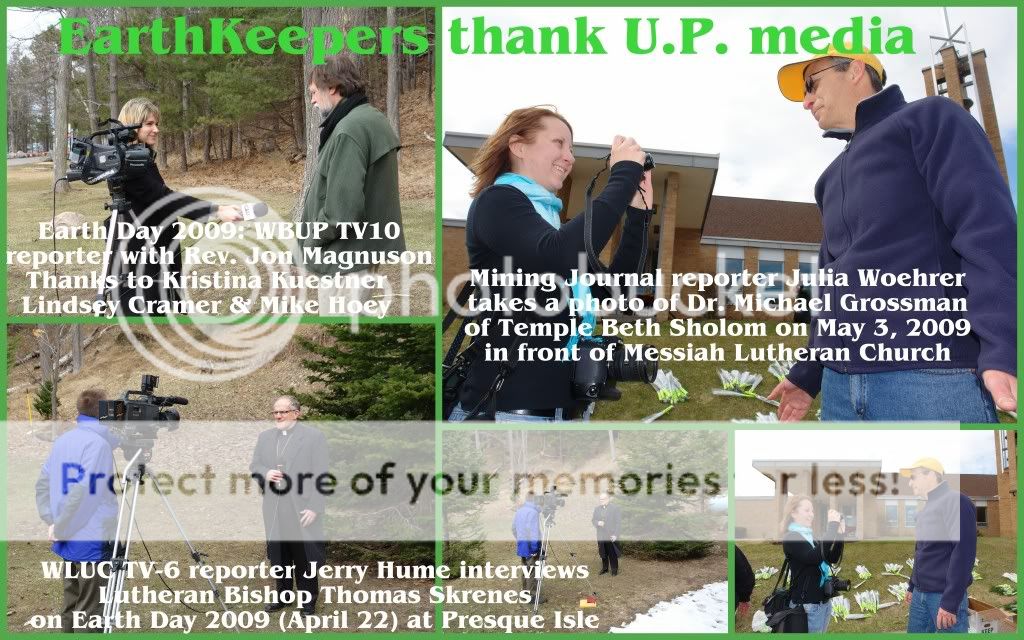
EarthKeeper background:
This is the fifth year that the U.P. EarthKeepers have launched an Earth Day environment project.

From 2005-2007, over 15,000 U.P. residents turned in more than 360 tons of household hazardous waste at a dozen collection sites across the U.P. Most of the items were recycled and the remainder was properly disposed under federal guidelines including electronic waste (e-waste) like computers, monitors and printers plus cell phones, pharmaceuticals, pesticides, herbicides, oil-based paint and vehicle batteries.
Last year the EarthKeepers provided a household energy conservation checklist that prevented over 3 million pounds of carbon from being released into the atmosphere, Lindquist said.
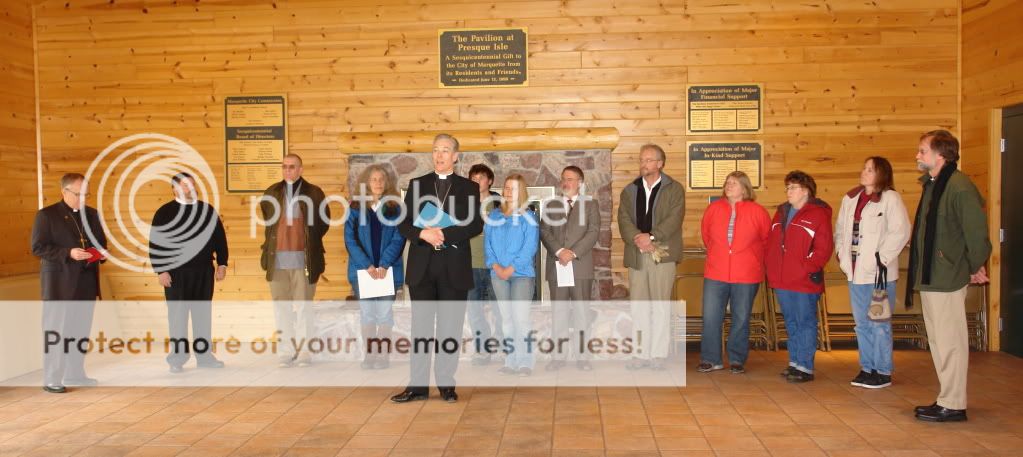

This rainbow appeared late in the day on April 30, 2009 over the Grace Presbyterian Church in Sagola as an interfaith group prepared seedlings for planting. It was taken by many as a sign that the 2009 interfaith EarthKeeper Tree Project was a good thing being done by people who care. (Photo by Jessica Schultz)

The 2009 Sacred Planet series sponsored by the Northern Michigan University EarthKeeper Student Team

